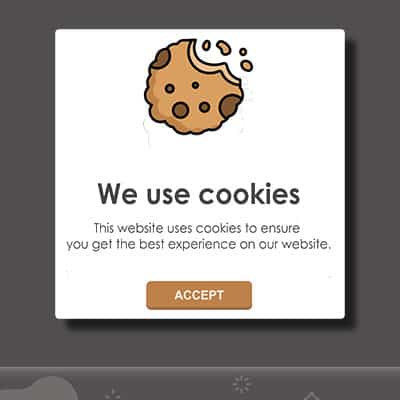
What do a bakery and a web browser have in common? Both have cookies—but, what are browser cookies, and what do they do? Let’s take a few moments to explore the concept of the browser cookie and what their function is.
So, What Are Browser Cookies?
A browser cookie is quite simply a text file that your computer uses as a kind of identification as it connects to a network, nowadays most associated with the Internet. HTTP cookies help to differentiate between users and make each of their browsing experiences the best they can be.
To accomplish this, HTTP/browser/Internet cookies enable your browser to track and save data about each user’s browsing sessions—jargon for the time spent on each website. Whenever you visit a website for the first time, the server that hosts the website’s data shares information with your browser that is recorded in a cookie on the browser. The next time you visit that website, the cookie tells the website what information to show you from your past sessions.
This is how websites are able to remember that a user has logged in after the browser is closed, or keep track of items that have been added to a shopping cart. In fact, cookies are responsible for allowing the “back” button to work on your browser.
Not All Cookies are the Same
Okay, to this point, we’ve primarily discussed first-party cookies, or those that the websites you visit create directly. So long as you’re browsing safely, these cookies will generally be safe to collect.
However, there are also third-party cookies, those that come from another website than the one you’re visiting. These are frequently spread through advertisements to help track a user’s surfing patterns.
Session cookies are those that only last as long as a user is on a website, and marketing cookies are those that help shape the ads that a user sees based on their browsing history—they’re the reason that you might keep seeing ads for a tortilla press after looking up recipes for homemade tortillas.
Other cookies include performance/analytical cookies, which give those who run websites the metrics they need to improve them. These metrics include things like the length of time spent on a website, the levels of activity different parts of the website see, and if visitors manage to find what they are looking for.
Some Cookies Should Be Avoided
Generally speaking, a business should only enable the minimal cookies needed to function. Otherwise, more data may be shared than you are comfortable with, and you might be exposing your data to threats. Fortunately, most cookies are relatively simple to remove if need be.
How to Remove Cookies in Different Browsers
Google Chrome
Access the three-dot menu, and from there, Settings. Under Privacy and security, click Clear browsing data and proceed to Advanced. Once you’ve selected a time period, select Clear data.
Microsoft Edge
Select Settings, and then Privacy and services. You’ll see a section labeled Clear browsing data, where you can Choose what to clear. You’ll be prompted to select the time range to clear data from, which you can accomplish by clicking Clear now.
Mozilla Firefox
Click on Options, and then on Privacy & Security. You’ll see Cookies and Site Data, and the option to Clear Data.
As always, Twintel is here to assist you with all aspects of your technology. Find out how else we can assist you by giving us a call at 888-428-0599 or scheduling a meeting and asking us about our IT support and consulting services.
Twintel has grown into an expansive, full team of IT services professionals, acting as the outsourced IT department of non-profits, small to mid-size businesses, and enterprise-level corporations in Orange County, across California, and nationally.
Today, it’s the strength and deep expertise of the Twintel team that drives positive outcomes for clients. Each of the support staff, technicians, and engineers works diligently each day to make sure that the companies served have the seamless, secure, and stable IT environments needed to allow them to pursue their organizational objectives.